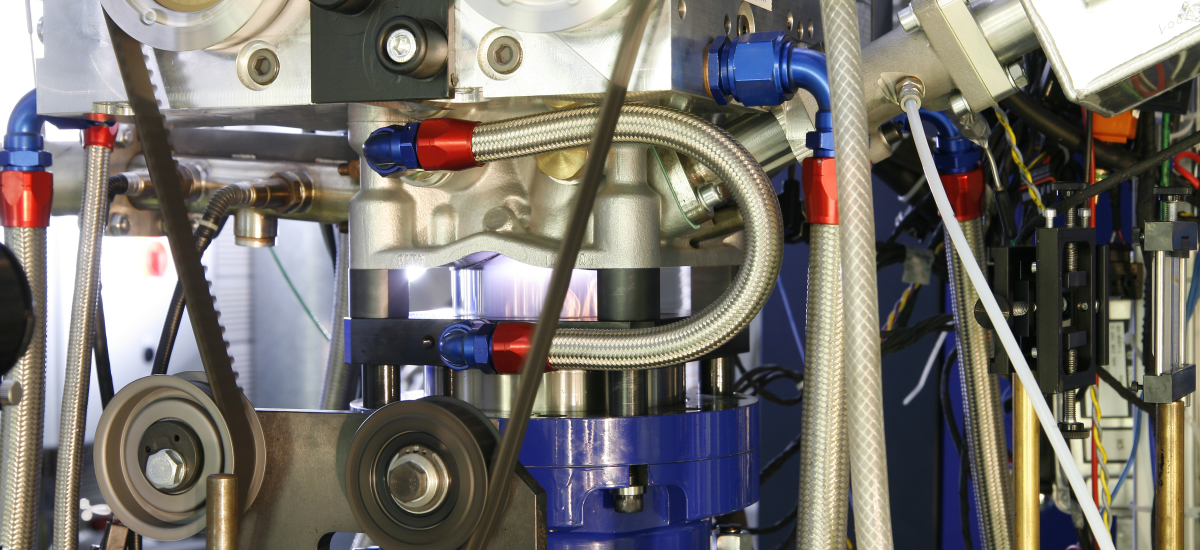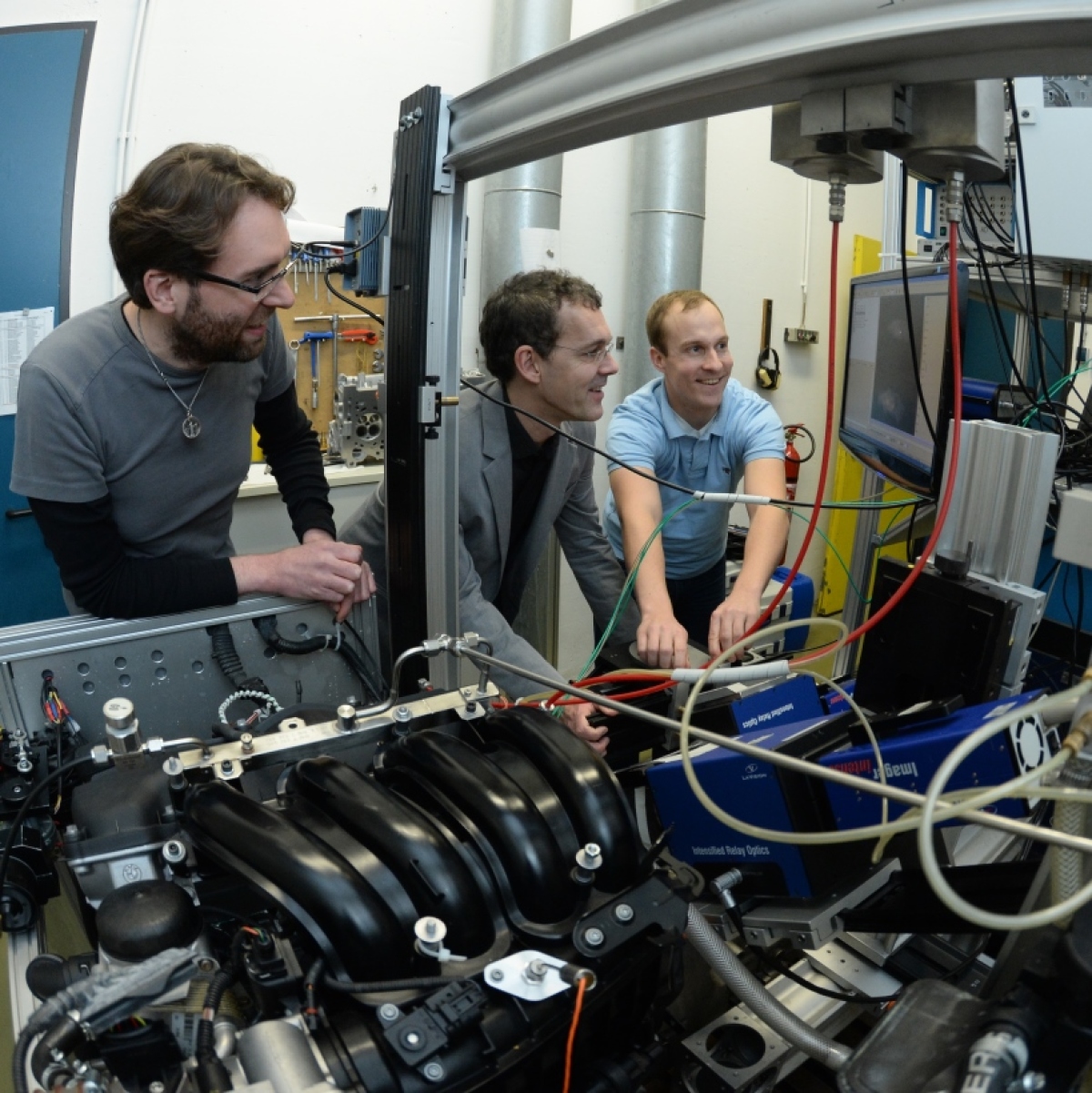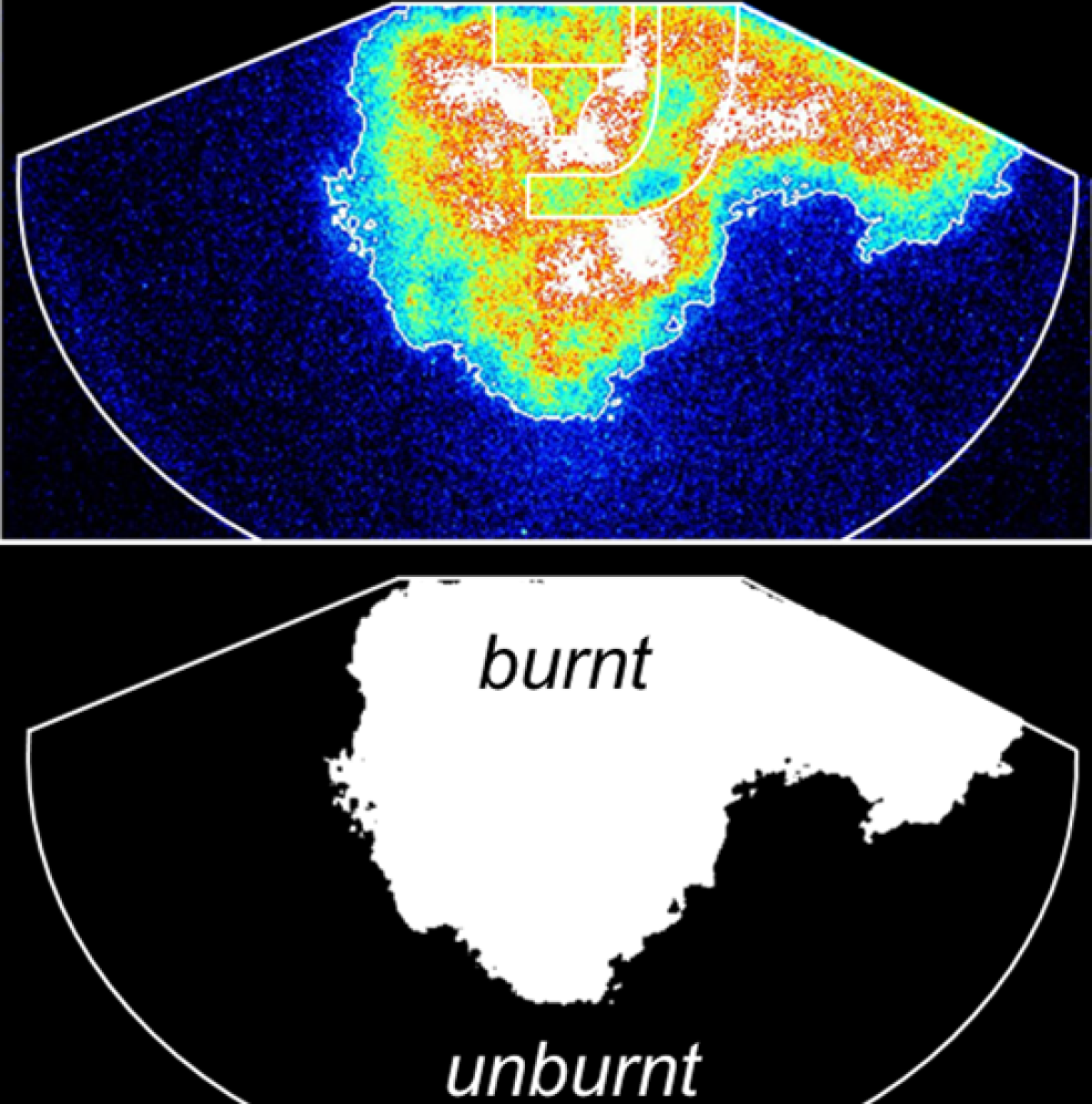Reactive Fluids: Internal Combustion Engines
The team led by Professor Kaiser expands our fundamental understanding of the physical and chemical processes in Internal Combustion Engines. Optical measurement techniques enable detailed studies of the complex processes occurring in the cylinders of an engine. The knowledge obtained here is used by industry to develop cleaner, more efficient engines.
Despite their long history, internal combustion engines have are far from fully optimized , nor is predictive design truly possible because of the combination of complex geometry, high-temperature chemistry, and turbulent flow. Even the most advanced simulations currently in use in industrial engine design contain two dozen semi-empirical constants. Their reliability is therefore much reduced when they are applied outside the narrow parameter range the underlying models were designed for. What is needed is literally a much deeper look inside the engine – like that provided by lasers and cameras. Thus in this group, laser-based measuring techniques, some of which were previously developed by the Laser Diagnostics team, are applied to combustion engines. The engines are either specifically designed for this research by incorporating windows or are studied in a minimally invasive fashion using purpose-built endoscopes. An emphasis is on quantitative imaging of parameters such as intake-air flow into the cylinders, fuel distribution, temperature, and flame propagation during combustion. The data obtained here also serve to validate spatially and temporally resolved computations such as those developed in the Fluid Dynamics group.
Along with internal combustion engines and other piston machinery, students also learn about techniques for optical measurement of flows and their applications. Bachelor’s and Master’s thesis are often at the interface of traditional mechanical engineering and optical technologies like cameras and lasers.



